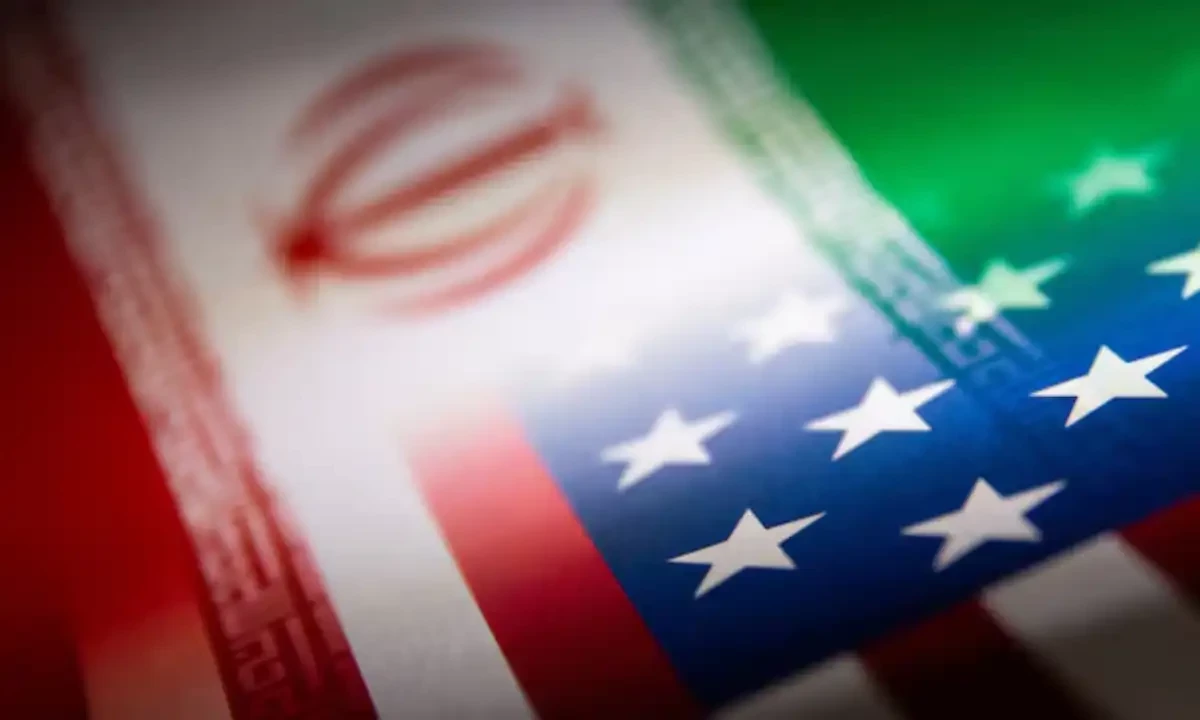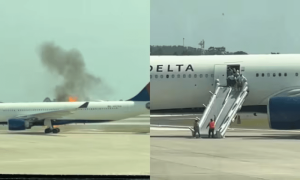Over 5 key things to know about US-Iran talks in Oman
As tension mounts between the US and Iran, an “indirect” meeting between envoys from Washington and Tehran is taking place in Oman on Saturday.
It is a rare diplomatic exchange between two countries that have been locked in a kind of cold war for almost half a century – and one that will unfold in the shadow of US President Donald Trump’s repeated threats of military force against the Islamic Republic.
Iran and the US have confirmed that “indirect” talks will take place between senior figures from Washington and Tehran in Oman on Saturday, led by US President Donald Trump’s special envoy Steve Witkoff and Iran’s Foreign Minister Abbas Araghchi.
Behind the scenes
With both countries having cut off diplomatic ties 45 years ago, this meeting has sparked hopes of a possible diplomatic resolution to the pressing question of Iran’s nuclear programme. According to Tehran, representatives from the two countries won’t be meeting face-to-face – instead, mediators will relay each side’s statements to the other. But Trump contradicted this on Monday by saying that this “high-level” meeting would involve direct talks on Iran’s apparent pursuit of nuclear weapons.
Iran was quick to reject Trump’s statements, with Araghchi telling state media that the talks would have to be indirect in nature.
“We will not accept any other form of negotiation,” he said.
“There’s no negotiations,” state department spokeswoman Tammy Bruce hit back on Tuesday. “This is a dynamic where the president has made very clear and certainly the secretary has made very clear that Iran will never have a nuclear weapon,” she said. “It’s touching base, yes. Again, it’s not a negotiation. It’s a meeting.”
It won’t be the first time that Iran and the US have held discussions through mediators – indirect talks that can, and have, led to direct conversations behind the scenes. Hossein Mousavian, a former Iranian diplomat who was a member of the team negotiating the 2015 nuclear agreement and is now living in the US, is no stranger to these workarounds.
Mousavian told French daily Le Monde that in 2014, as negotiations were taking place in Istanbul in the presence of the EU’s chief diplomat Catherine Ashton, Ashton “had left the room, allowing the Iranian and US negotiators to engage in direct dialogue”. The nuclear deal was signed a few months later.
Getting down to business
On the American side, US special envoy for the Middle East Steve Witkoff will be taking part in the discussions, the state department confirmed Tuesday.
“It’s not (Secretary of State) Marco Rubio, but Steve Witkoff who was chosen to go to Muscat – the personal envoy of Donald Trump,” said Institute of Strategic and International Relations associate researcher and Middle East expert David Rigoulet-Roze, stressing that the choice of Witkoff showed the importance of this meeting “at the highest level”.
A loyal follower of Trump, Witkoff comes not from the world of international diplomacy but US business, having made his fortune in real estate. It’s a fact that has not escaped Tehran, said Jonathan Piron, a specialist in Iranian history at the Etopia research centre in Brussels. He pointed to declarations by Iranian President Massoud Pezeshkian on Wednesday that his country was open to US investment.
“There’s a willingness to perhaps flatter Witkoff, and through him Trump, by adopting a grammar that speaks to them and by dangling in front of them everything that a deal leading to the lifting of American sanctions on Iran could mean for the US,” he said.
“The stance of Donald Trump’s new administration’s entourage towards Iran is markedly different from that of the first Trump administration,” he added. Between 2016 and 2020, he said, “there was John Bolton, Mike Pompeo, and in a way Rudy Giuliani”.
“The Trump administration was a lot more intent on regime change – hence their withdrawal from the nuclear deal in 2018. This time, the second Trump administration and the US president’s entourage are still very hostile to the Islamic Republic, but some of them have shown themselves to be more open to the idea of negotiations to stabilise the relationship with Iran.”
On the Iranian side, Abbas Araghchi has already been directly involved in negotiations with the US leading up to the nuclear deal, having been part of the team led by career diplomat Mohammad Javad Zarif.
“He notably contributed very strongly to the content of the agreement in 2015,” Piron said. “He knows the Americans, and he might even have a certain advantage in the way that he conducts these talks because of that memory and that experience.”
Oman, the shadow mediator
The talks will take place in the Sultanate of Oman, the discreet neighbour to Iran known throughout the region for its neutrality. Like Qatar, the country has a long history of mediating between rival powers.
Having broken off diplomatic relations in 1980, Iran and the US are reliant on these kinds of intermediaries – as well as indirect contacts through the Swiss embassy in Tehran – to communicate with one another, whether it takes the form of passing on information or actual negotiations.
Oman has also played a role in facilitating the freeing of Westerners imprisoned in Iran, such as the release of Belgian humanitarian worker Olivier Vandecasteele in 2023 in exchange for Iranian national Assadollah Assadi, who was sentenced to 20 years in prison in Antwerp for plotting a terror attack in France.
An approaching deadline
This possible meeting between the Iranians and the Americans comes after weeks of diplomatic back-and-forth. Both sides have put out almost daily statements and social media posts since Trump sent a letter to Iran’s Ayatollah Ali Khamenei towards the end of March.
In the letter, officially framed by the US president as a first step towards bringing about a new nuclear agreement with Iran, Trump apparently gave Tehran two months to negotiate, threatening to launch military strikes against the country’s nuclear infrastructure after the mid-May deadline.
Trump doubled down on these threats Monday, warning the Iranian government that it would be in “great danger” if nothing came of the upcoming talks.
It’s statements like these that suggest that Washington isn’t interested in the steady workings of slow diplomacy like those that led to the 2015 nuclear deal. For Rigoulet-Roze, Saturday’s talks are becoming a “major event”.
“In reality, it’s on this occasion that people are going to evaluate what exactly is possible in regard to nuclear negotiations,” he said.
Last chance
There’s a lot at stake. At the start of April, the US ramped up its military pressure on Iran by sending a number of strategic B-2 bombers to their military base on Diego Garcia, one of the Chagos Islands in the Indian Ocean. The planes are capable of targeting critical infrastructure in Iran.
For Rigoulet-Roze, the message was clear.
“This is a strategic signal for Iran, who have perfectly grasped that the regime’s survival is at risk.”
He said the move was part of a US military option “on the same scale as that of October 2001 ahead of the US attack against Afghanistan and in March 2003 before the invasion of Iraq”.
In the face of this escalation, Tehran continues to deny that its nuclear programme has military aims. Despite this, the country finds itself in a state of insecurity that could push it closer towards acquiring nuclear weapons.
In its last report, the UN nuclear agency warned of a considerable increase of Iran’s stockpile of uranium enriched to 60 percent purity. Should it take the next step, the regime now has enough nuclear material to create six or seven bombs.
In this sobering context, Rigoulet-Roze said, Saturday’s “indirect” meeting between Witkoff and Araghchi is starting to look like “a decisive turning point before a last-chance process”.
For the latest news, follow us on Twitter @Aaj_Urdu. We are also on Facebook, Instagram and YouTube.





















Comments are closed on this story.